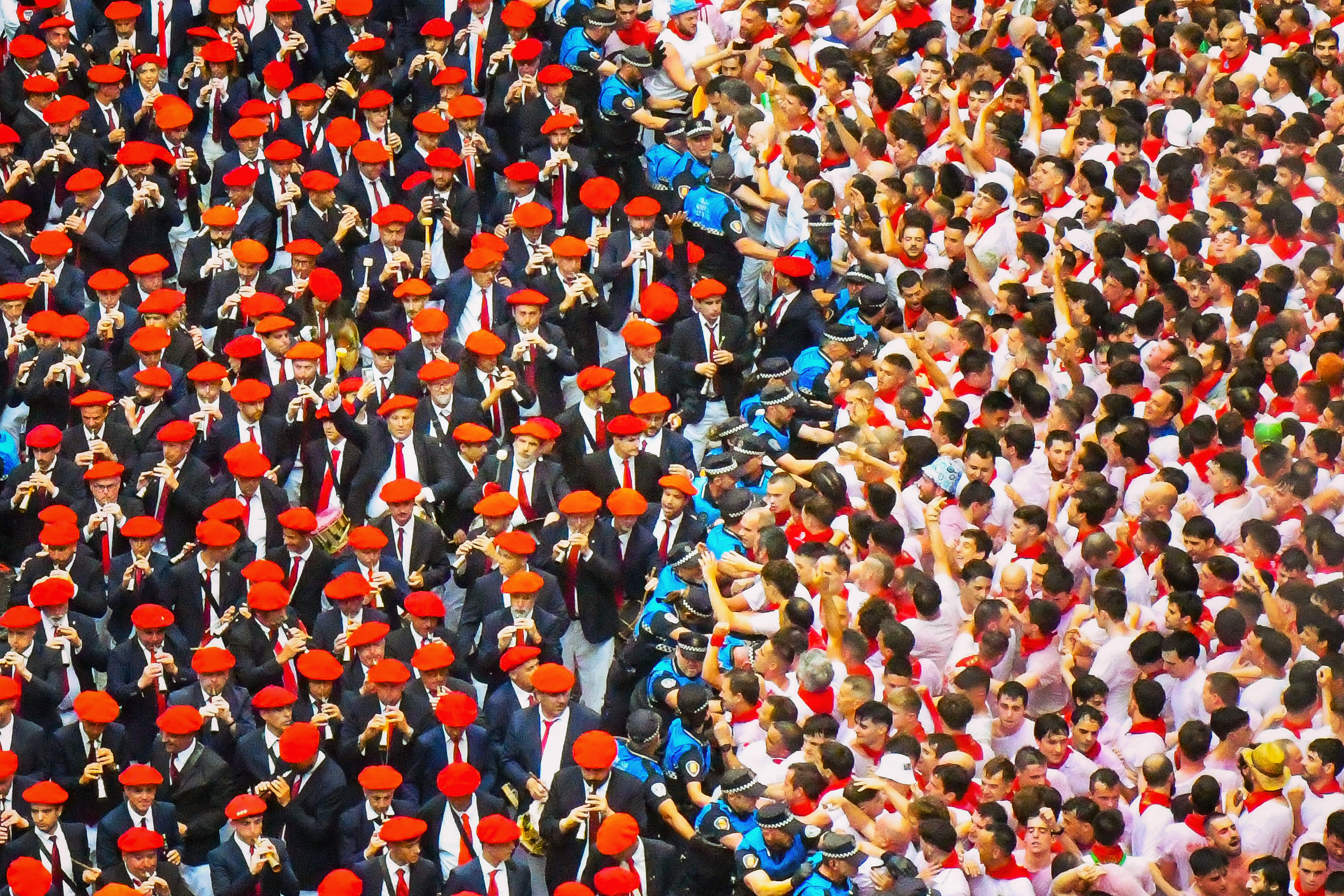Media release
From:
Understanding the dynamics of a large crowd
The collective motion of large crowds may be predictable past a certain density of people in a given area, according to a study published in Nature. The findings, based on four years of observations at a traditional Spanish festival, offer insights that could help to predict dangerous crowd behaviour in confined environments.
Dense crowds, such as those at concerts or festivals, can be a major hazard as hundreds of individuals can move en masse leading to crushing, potential suffocation and death. Understanding how people in large crowds move in relation to each other can help prevent tragedy, but the dynamics in groups containing thousands of people have been difficult to describe or model especially due to the lack of repeatable and safe experiments at such a scale.
Denis Bartolo and colleagues tracked the crowds of an estimated 5,000 people over four instances of the San Fermín festival in Pamplona, Spain, using cameras placed in two observation spots in the plaza, which is 50 metres long and 20 metres wide. Through their footage and a mathematical model — where people are so packed that crowds can be treated as a continuum, like a fluid — the authors found that the density of the crowds changed from two people per square metre in the hour before the festival began to six people per square metre during the event. They also found that the crowds could reach a maximum density of 9 people per square metre. When this upper threshold density was met, the authors observed pockets of several hundred people spontaneously behaving like one fluid that oscillated in a predictable time interval of 18 seconds with no external stimuli (such as pushing).
To establish the general nature of their findings, the authors compare footage from the San Fermín festival in Spain to that from the 2010 Duisburg Love Parade in Germany during which several hundred people in a panicked crowd were injured and 21 people died. Bartolo and colleagues found that when the Duisburg crowd reached a density similar to that of the San Fermín festival, the same oscillations were observed.
The authors note that these findings could offer insights into how to anticipate the behaviour of large crowds in confined spaces.
Multimedia






 International
International



